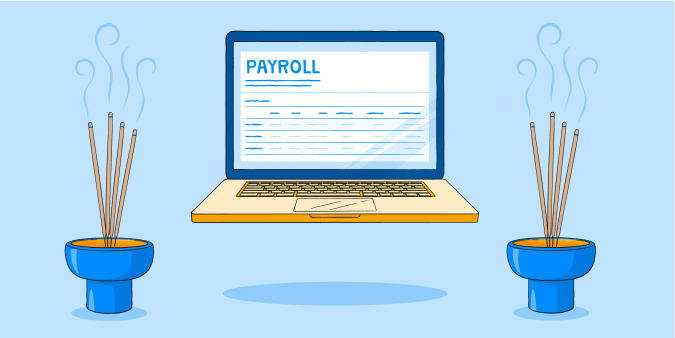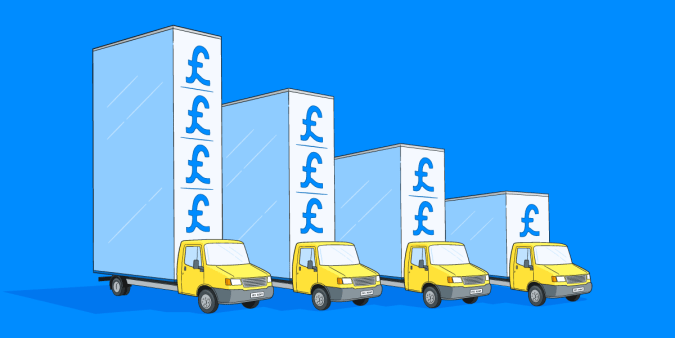What is cashflow and why is it so important for small businesses?

Have you ever wanted to be a fortune teller? This rare ambition suddenly seems a lot more attractive when you become a small business owner and every day can be fraught with uncertainty. One of the tools for getting perspective on your business is your cashflow prediction.
But, what exactly is cashflow and why won’t we stop talking about how important it is to track it? Here’s the part where we try to transform you into a cashflow convert.
What is cashflow?
Cashflow is, at its simplest, the money coming into and going out of your business. And generally, you’ll want to aim for a positive cashflow - more money coming in than going out.
However, a business’s incomings and outgoings rarely line up perfectly. You may spend several months with negative cashflow, in other words, with more going out than coming in.
Why is cashflow so important?
Your business has outgoings that have to be paid at certain times to keep your business running. These could be payments for materials, wages for employees, bills for contractors, software, machinery, office or factory space rental. If you can’t pay your bills on time, or at all, your business can’t continue.
You can plan for your normal running expenses. But planning for income is much harder. If your cashflow is negative for certain periods, one unexpected late-paying client or unplanned slow sales month could result in you failing to pay your bills.
This is a bigger problem for small businesses and startups, as you’re likely to have less money available for emergencies or slow business periods. However, if you look ahead and understand where your business has potential cashflow problems, you can plan to reduce the impact on your business.
Ultimately, healthy cashflow is all about making sure that you have the money you need, when you need it.
What’s the difference between cashflow and profit?
Cashflow does sound similar to profit, which is the amount of money your business has once its expenses are subtracted from its income. However, profit doesn’t take into account when payments are received or due, and how much cash your business has in its account for immediate use. An unpaid invoice, for instance, will increase your profit but won’t affect your cashflow.
In practice, it is possible for a business to be profitable and have negative cashflow because it’s paying back a business loan or struggling with late payers. Or, a business could have positive cashflow and fail to make a profit because it is investing in growth, for example by hiring people. That’s why businesses should track both these metrics, profit and cashflow, for a full picture of their financial health.
How should you track your cashflow?
Know when bills and expenses are due
Keep track of when your costs need to be paid. If you have regular bills, do you pay these daily, weekly, monthly or annually? And if so, does this model make the most sense? For example, switching to annual subscription models can save you money - as long as you set aside the money for this. If you’re likely to forget, maybe a monthly subscription will work better. But remember to pay on time when you can, or your relationship with your suppliers could suffer.
Estimate how much tax you’ll owe
Whether you’re just paying your personal Self Assessment tax bill or your business also has to handle Corporation Tax or VAT returns, you’ll have tax deadlines you have to meet. Calculating how much tax you’ll owe based on your income and expenses each month allows you to be proactive and set aside enough money to cover your tax bills.
Check your invoices regularly
You can also help to keep your income on track by watching your invoices. Are any of them nearing the payment deadline you set? You might need to chase an invoice to ensure you get that payment on time for your business. If you have an issue with late payers, maybe it’s time to consider charging fees for late payments?
Create a cashflow forecast
A cashflow forecast is a plan that shows the income and outgoings your business expects over a set period of time. If you spot any periods of negative cashflow in advance, you have time to act before it becomes a problem. Maybe you could arrange an overdraft or loan for your business account, or attempt to win more sales or increase your prices to increase cash inflow.
Account for the unexpected
Once you have a cashflow forecast, you can add in theoretical issues that your business might face, like late payers or a supplier price increase. This will show you whether your business is resilient enough to cope with this - or if you need to create a safety net for unexpected problems.
Can business loans cover my cashflow problems?
Many businesses do look to use loans to bridge occasional cashflow problems. In the final quarter of 2022, 69% of small business funding needs were due to cashflow issues according to SME Finance Monitor.
However, this is dependent on a business’s ability to secure a loan. Businesses with recurring cashflow problems may struggle to get loans if banks and other lenders doubt their ability to pay the loan back.
Master your business cashflow with FreeAgent
FreeAgent is ideal for businesses looking to better understand their finances, including cashflow. Our accounting software helps plan your cashflow for you, using your bank balance, added invoices and bills, tax liabilities and more. You can check your cashflow forecast 90 days ahead and manually add events to test possible scenarios.
Dive right into confident cashflow management with our 30-day free trial.


